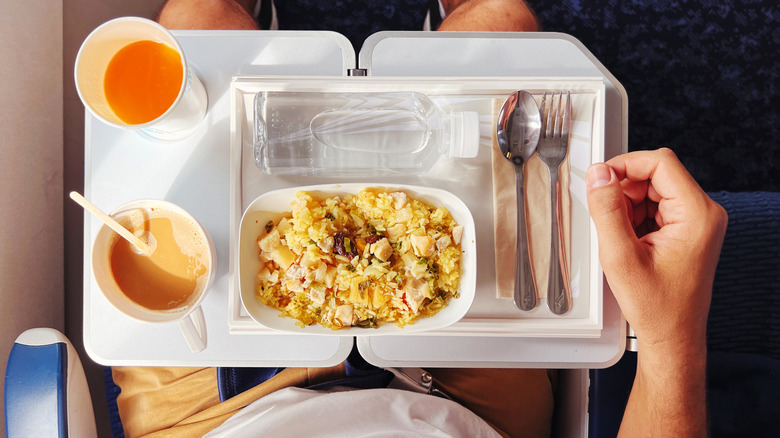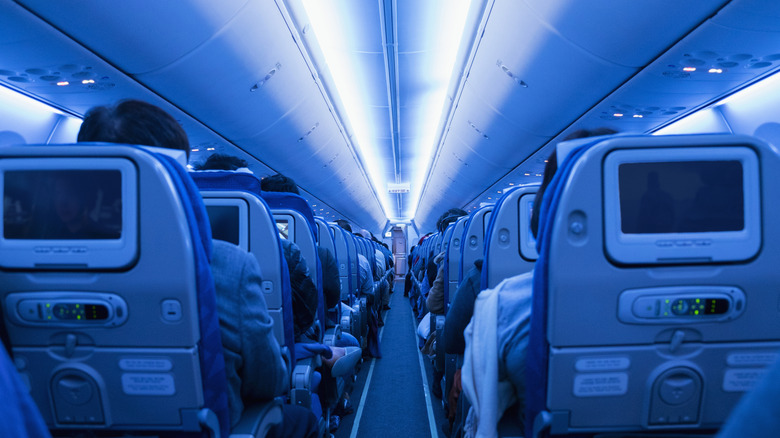What It Really Means If Your Flight Doesn't Offer Food Or Beverages
Dining while flying can be a tricky balance to strike: Eating outside of your usual hours becomes a norm, and a glass (or two) of wine before your 4 a.m. flight seems extremely reasonable. The reality of not getting a meal at all during a flight hardly ever crosses the minds of most travelers, but it's worth preparing for. While tasteless in-flight meals are hit and miss, flying with an empty stomach has the potential to spoil the experience if you are looking forward to tucking into something come take-off. However, there are multiple reasons you may not receive food on board, including safety, flight times, and even a reduction in the airline's budget.
Announcements of turbulence are always a little off-putting, especially for anxious fliers, but sometimes they may put a halt on your in-flight dining experience in the name of safety. Mainly, turbulence may prevent air stewards from safely distributing snacks, drinks, and meals while they remain seated, which might result in delays or completely skipping the service altogether. Not only can severe turbulence cause food, drinks, and trays to fall but it can even lead to fatalities and injuries. Many airlines have adjusted their food services in response to the predicted rise in turbulence over the next few years, such as Korean Airlines, hailed as one of five best airlines for in-flight dining experiences, which no longer serves ramyeon instant noodles to prevent burning accidents during turbulence. With climate change causing bumpier and more turbulent flights, fewer meal options may become more of a reality for some fliers.
Shorter flight times and airline budgets also influence flight meals
Shorter flights — both domestically and around the world — do not always offer food to passengers. This is because the amount of time that it takes to take off and then prepare for landing doesn't always allow for the distribution of snacks. Some airlines specifically reserve free food services for a specific amount of flight time or miles. For example, American Airlines only provides refreshments and complimentary snacks on domestic flights over 250 miles, as does Delta Airlines. United allows its economy customers to enjoy free snacks on flights over 300 miles, and snacks are available to purchase on select flights beyond 500 miles.
When flying in Europe, some airlines are committed to providing a light snack service, and others provide refreshments to purchase on shorter flights. Budget airlines Ryanair, Wizz Air, and mid-range airline TUI offer beverages and food to purchase but do not provide free food services on short-haul flights. British Airways, one of the main airlines in the U.K., also charges for food and beverages during short-haul flights. With the rise in airfares globally, airlines seem to be seeking ways to cut their costs by limiting the number of complimentary meals. Even the airlines known for their in-flight meals made adjustments in 2024, such as Air France shifting from complimentary meals on short-haul flights to in-fight purchases, which the airline reported was to keep up with industry trends. Having your favorite snack on deck might be a wise choice to soothe a growling stomach mid-flight.

